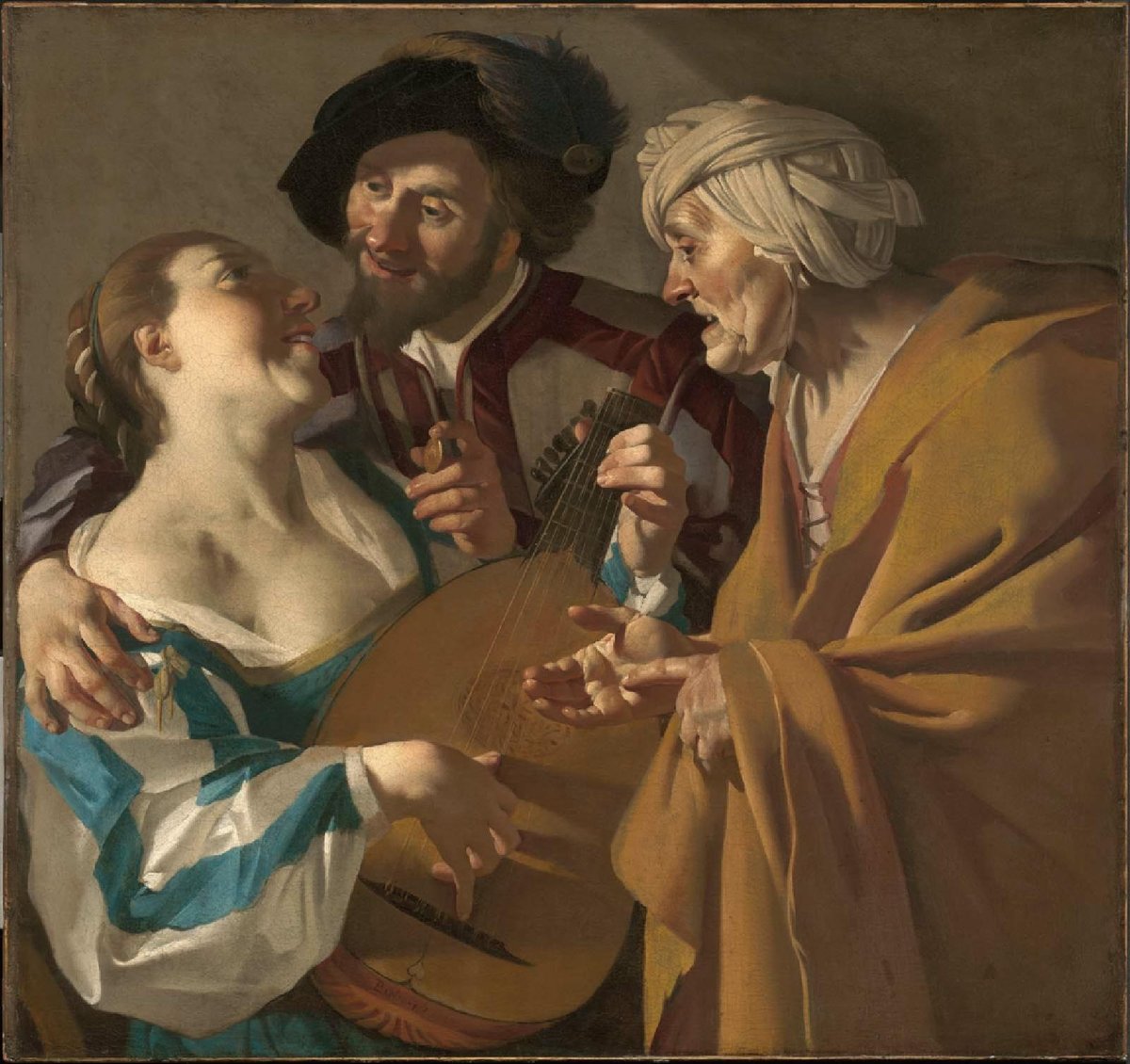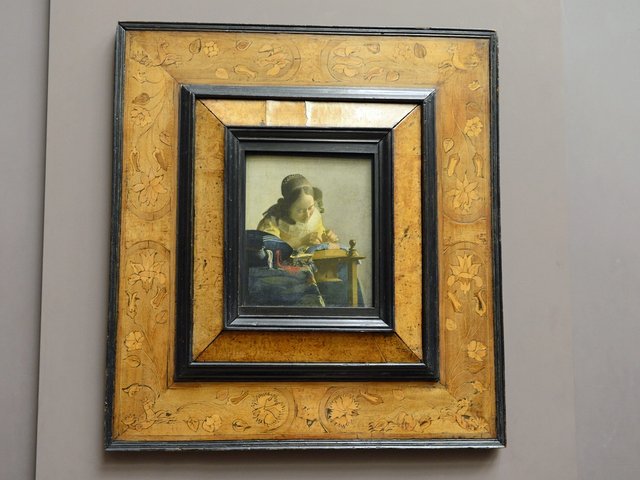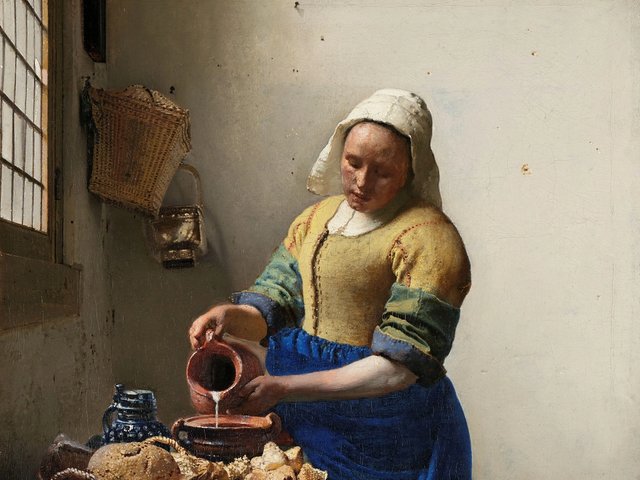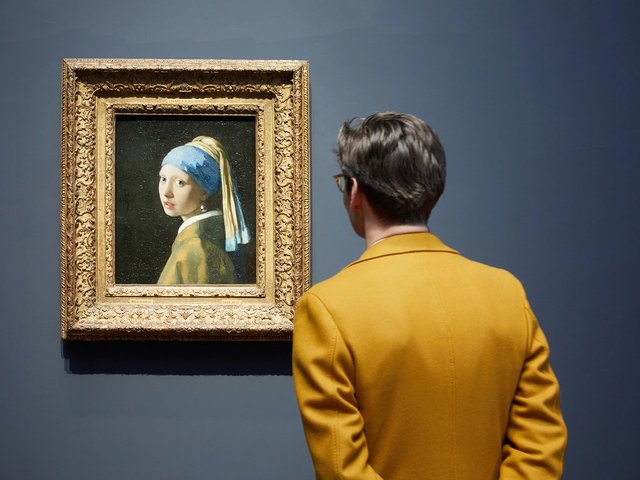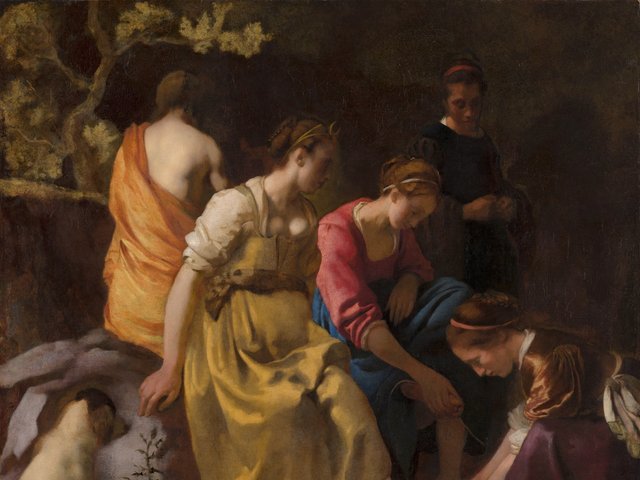Vermeer is such a phenomenon that one can “dedicate an exhibition to him here without including a single one of his paintings“, says the director of the Delft’s Prinsenhof Museum, Janelle Moerman.
Vermeer’s Delft (10 February-4 June) includes more than 100 objects relating to the artist’s personal life, the artistic climate in the city and its socio-economic climate. It is being presented at the same time as the Rijksmuseum’s retrospective Vermeer in Amsterdam.
But there are paintings by other artists and two are particularly important. Dirck van Baburen’s The Procuress (1622), depicting a brothel scene, is on loan from Boston’s Museum of Fine Arts. This painting, or possibly another version of it, was probably owned by Vermeer’s mother-in-law, Maria Thins. It appears in the background of Vermeer’s The Concert (1662-64, stolen from the Isabella Stewart Gardner Museum in Boston in 1990) and Young Woman seated at a Virginal (1670-72, National Gallery.
To us today it may come as a surprise that a brothel encounter would have hung in the house of a mother-in-law, but at that time it would have been primarily regarded as a warning about the dangers of temptation.
The other key loan is Jan Steen’s Adolf and Catherina Croeser on the Oude Delft (The Burgomaster of Delft and his Daughter), dating from 1655 (Rijksmuseum).This evokes the atmosphere of a Delft street scene when Vermeer was at his height, by one of his fellow artists, whose work he knew well. An elderly woman and young boy beg for alms from Croeser and his daughter.
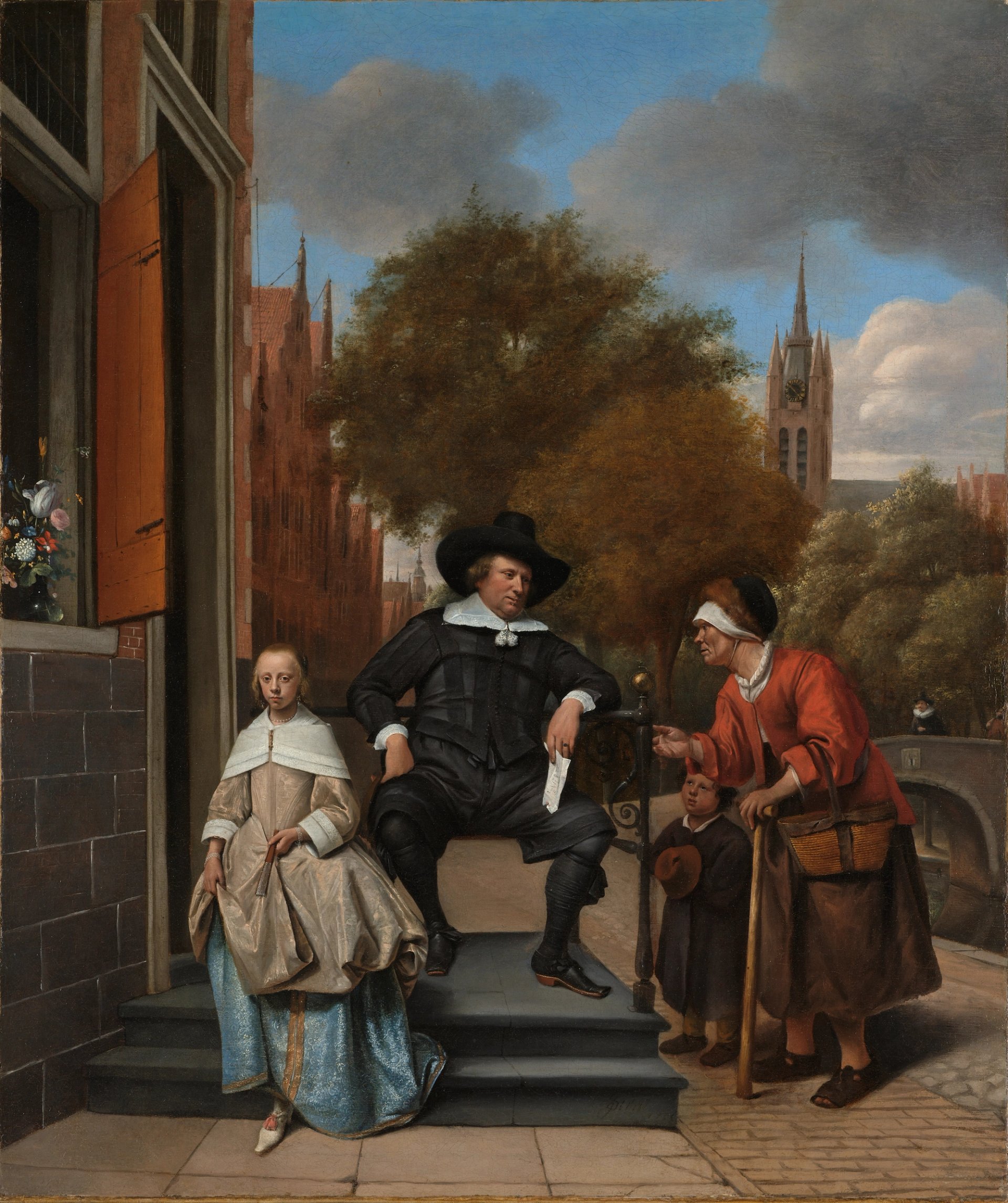
Jan Steen's Adolf and Catharina Croeser, known as "The Burgomaster and his Daughter" (1655), Rijksmuseum Courtesy of Museum Prisenhof Delft
Jan Steen's Adolf and Catharina Croeser, known as "The Burgomaster and his Daughter" (1655), RijksmuseumCourtesy of Museum Prisenhof Delft
Among other paintings is Hendrick van Vliet’s view of the interior of the Nieuwe Kerk (New Church), 1670-75 (Prinsenhof), with a dog peeing against one of the massive columns in the foreground. The exhibition also comprises Delft ceramics, drawings and furnishings relating to objects depicted in Vermeer’s paintings.
The new archival discoveries include a register recording that Vermeer had an elaborate funeral in 1675 and was buried with full honours. His body was carried by 14 pall-bearers and the Oude Kerk (Old Church) bell was chimed, presumably paid for by his wealthy mother-in-law.
Curated by the Prisenhof’s David de Haan, Vermeer’s Delft probes into “the man behind the paintings”. The museum’s setting is highly appropriate since it is in an historic building that Vermeer would have known. In one of the exhibition’s three galleries there is a ceiling mural of musical angels by Leonaert Bramer (1667-69), a local artist who influenced Vermeer’s early work.
Directly across the canal from the museum lies the Oude Church. From there one can walk in the footsteps of the artist, exploring a city whose street plan remains virtually unchanged since Vermeer’s day.


